The post (VIDEO) Leveraging Periscope App for Social Good appeared first on Socialbrite.
]]> As a follow-up to my post on Periscope for Nonprofits: A Quick Guide & Review, I gave a video interview last week with Stephen Shattuck from Bloomerang. The interview covers how nonprofits can leverage Periscope – Twiiter’s new live streaming mobile app – to better reach and communicate with their supporters and donors.
As a follow-up to my post on Periscope for Nonprofits: A Quick Guide & Review, I gave a video interview last week with Stephen Shattuck from Bloomerang. The interview covers how nonprofits can leverage Periscope – Twiiter’s new live streaming mobile app – to better reach and communicate with their supporters and donors.
I’ve been getting so many questions, and there’s been so much interest in this new app from the nonprofit community, that I thought posting this video Q and A would be an additional way to get the Persicope basics down, as well as some best practices and ideas on how your nonprofit can put Periscope to work.
Is your nonprofit using Periscope? Let me know in the comments! I’m doing a series of early case studies on Periscope for Nonprofts, and would love to feature how your nonprofit is leveraging Periscope for social or environmental good.
 This work is licensed under a Creative Commons Attribution 3.0 Unported.
This work is licensed under a Creative Commons Attribution 3.0 Unported.
The post (VIDEO) Leveraging Periscope App for Social Good appeared first on Socialbrite.
]]>The post Photos no longer get more reach on Facebook appeared first on Socialbrite.
]]>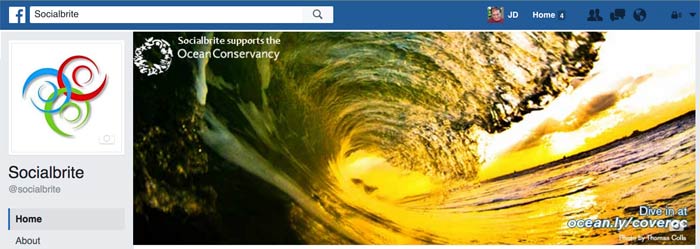

You’ve no doubt heard the advice that posting photos will help you get more reach on Facebook. That advice has been tried and true for years, until now.
According to a study by SocialBakers, photos now get less organic reach than videos, links, and even text updates. In fact, videos are now the king of the News Feed!
Socialbakers analyzed 4,445 Facebook Pages and 670,000 posts between October 2014 and February 2015. They discovered that videos now get more than twice as much reach as photos (shown below).

There’s no clear reason for this recent Facebook algorithm change, but Socialbakers offers two explanations:
- Facebook is responding to Pages looking to game the newsfeed with photos.
- Facebook is taking on YouTube as the king of video content.
Jan Rezab, Socialbakers CEO, told Business Insider: “Video is proving to be a very engaging format and gaining in popularity, consumers really like them. Therefore we’d advise marketers to include video as part of their content strategies.”
How should your nonprofit respond?
- First of all, check your reach report in your Facebook Page Insights. Specifically, analyze post reach by type between October 2014 and February 2015, the period of time Socialbakers analyzed.
- Second, consider stepping up video content.
- Third, consider publishing blog posts on your website. This way, you’ll be armed with a Facebook Page AND your website, in your Facebook marketing action plan.
What do you think?
 This work is licensed under a Creative Commons Attribution 3.0 Unported.
This work is licensed under a Creative Commons Attribution 3.0 Unported.
The post Photos no longer get more reach on Facebook appeared first on Socialbrite.
]]>The post My take on the ALS #IceBucketChallenge appeared first on Socialbrite.
]]>
Video still of Bill Gates taking the ALS #IceBucketChallenge (via YouTube)
3 reasons I’ve decided to embrace this campaign — and why you should, too
Target audience: Nonprofits, cause organizations, foundations, NGOs, social enterprises, businesses, educators, journalists, general public.
 As you all likely know by now, the ALS #IceBucketChallenge is taking your Facebook news feed by storm. Your friends, colleagues, heck, even your grandmother might have been nominated to dump a bucket of cold water and ice on her head in the name of charity. And in this case, it’s a very good cause. ALS is Amyotrophic Lateral Sclerosis, also referred to as Lou Gehrig’s disease,a neurodegenerative disease characterized by muscle spasticity, rapidly progressive weakness due to muscle atrophy, and difficulty in speaking, swallowing, and breathing.
As you all likely know by now, the ALS #IceBucketChallenge is taking your Facebook news feed by storm. Your friends, colleagues, heck, even your grandmother might have been nominated to dump a bucket of cold water and ice on her head in the name of charity. And in this case, it’s a very good cause. ALS is Amyotrophic Lateral Sclerosis, also referred to as Lou Gehrig’s disease,a neurodegenerative disease characterized by muscle spasticity, rapidly progressive weakness due to muscle atrophy, and difficulty in speaking, swallowing, and breathing.
As a social media consultant working with social causes and nonprofits, I have taken great delight in the virality of this meme all in the name of a disease that gets very little attention and fundraising dollars.
Along with most social media memes or “viral schemes” comes the cynicism and the naysayer backlash — and I get it. I do. But the proof is in the numbers. Last year, the ALSA.org raised $1.9 million in contrast to this year’s $31.5 million, and that number is growing by the millions every day.
Here are three reasons I’ve decided not to be a cynic and embrace this challenge, and why you should too:
1Peer pressure and egoism have always been central themes in philanthropy and successful fundraising. If you’ve ever attended a nonprofit board meeting, you’ll see these two elements in play quite often and to great effect. Altruism isn’t selfless. It never has been and probably never will be. The ALS #IceBucketChallenge is no different. It’s just in your face more.
2The rise in social media has contributed to what many call, “armchair activism,” “slacktivism” or “clicktivism.” These words are pejorative terms that describe minimal effort, “feel-good” measures, in support of an issue or cause, that have little effect other than to make the person doing it feel like they have contributed. The bottom line is that “clicktivism” does build greater awareness and can be the potential first rung in the donor engagement ladder. It’s also cultivating a generation of future philanthropists and do-gooders.
There’s a reason why so many of the millennial generation are going into philanthropic careers or finding ways of incorporating good works into their daily lives. I think the rise in these types of online social good campaigns that flood our news feeds have a huge part to play in this phenomenon. The ALS #IceBucketChallenge is a perfect example of this.
3Building awareness is critically important. Yes, donation dollars trump all but there’s a reason nonprofits have communications and marketing departments. These teams are charged with not only raising money online but also building awareness and community for their cause. It’s the first step in creating a consistent and renewable supporter and donor base that’s loyal and motivated.
What’s your take on the ALS #IceBucketChallenge?
 This work is licensed under a Creative Commons Attribution 3.0 Unported.
This work is licensed under a Creative Commons Attribution 3.0 Unported.
The post My take on the ALS #IceBucketChallenge appeared first on Socialbrite.
]]>The post How to build awareness for your campaign appeared first on Socialbrite.
]]>
Photo courtesy of unicefiran (Creative Commons)
Social media, data & messaging are among the key ingredients
Target audience: Nonprofits, cause organizations, foundations, NGOs, social enterprises, social media strategists, educators.
Guest post by Mary Joyce
Whether you run a nonprofit, a social enterprise or a cause organization, it’s likely that at some point you run up against the barrier we’ve all faced: How do I get the word out about this amazing campaign?
Here are seven steps that we’ve found make a good blueprint on how to build visibility and awareness so that you can then move people to take action and create impact.
Identify your targets and supporters
1There are two types of audiences that you most likely need to take action for you to achieve your goal: targets and supporters. Targets are the people who have the direct power to give you what you want. They are often officials who have the authority to make policy changes. The target could be a government minister or the principal of your school. When the target takes action, your goal is achieved.
Supporters are people who help who you achieve your goal by putting pressure on the target. These could be sympathetic politicians, the students in your class, or civic organizations that care about your cause.
Segment your audiences

Photo courtesy of thinkjose (Creative Commons)
2Segmenting means breaking an audience down into smaller groups that share common characteristics. You can segment your audience down even further than just targets versus supporters. In fact, the more you segment, the more you can tailor your message to the specific priorities of a given group. For example, you might separate your “student” audience group into students who care about the environment, members of student government, and students who write for the school paper. You would present a different message to each group.
Segmenting is only limited by time and human resources. Since each segment will need its own messaging arc, and creating 10 of these will be more work than creating only one, you should be sure not to create any more segments than you have the time or resources to create content for and respond to.
Establish a messaging arc
3The message arc is a multimessage narrative that takes your audience from where they are (not knowing or caring about your cause) to where you want them to be (taking action on behalf of your cause). You will need a different message arc for each segment.
-
The stronger the support of the audience, the shorter the message arc. For a neutral audience, you’ll need to create more messages.
The stronger the support of the audience, the shorter the message arc. For example, if an MP already supports women’s rights you can ask them directly to support your campaign.
- For a neutral audience, you will need to get more messages through to them. You might begin with something short and emotional to get their interest (like a YouTube video), then present some facts in an email so they better understand the problem, then ask them to take a small action, and then a larger one.
- Sometimes you will be able to create a message arc to convince an opponent to become a supporter, but your minimum goal is to turn opponents into neutrals: people who will not to action for or against your cause.
Understand supporter networks
4Though you can use digital technology to send a message to different audiences, these platforms also make it very easy for members of your audience to send your message to their networks of friends, family, and colleagues.
These supporter networks are essential for building your audience. Though you may only have 100 followers on Twitter, if half of those people share your messages with their followers, your audience could quickly reach thousands of people.
Fine-tune your messaging & provide a call to action
5Messaging will look different on different platforms — Twitter, blog, YouTube, etc. — but here are some key elements to remember when developing messages.
- Use emotion — outrage, shock, humor — to grab your audience’s attention.
- Use facts and statistics to make the problem specific and to establish your authority in defining the problem. You will likely need to do research.
- Define a solution. You first want people to care about your problem and understand it. After you’ve achieved this, you need to present a credible solution for how to fix the problem. People will take action only if they believe your solution will fix the problem and that their action will help to achieve that solution.
- Provide a call to action. Explicitly state what action you want your audience to do.
Gather data
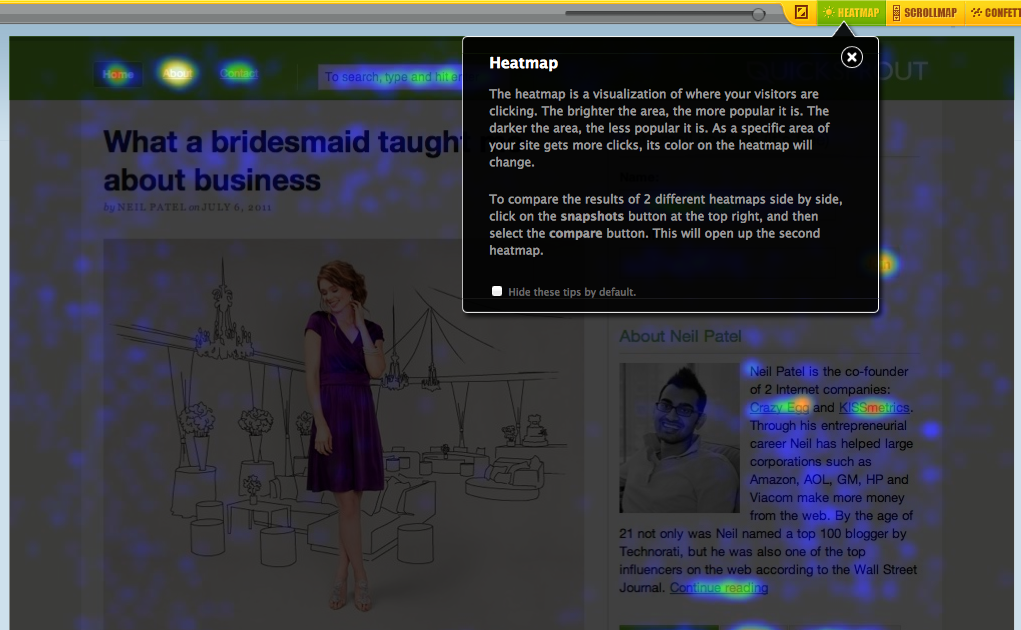
6One of the nice things about digital media is that it’s easy to track information about your campaign. Tracking data like site hits, blog comments and retweets can help you know which messages are most popular and which are not. Here are some tools you can use to gather data.
To gather information about how people use your site, Google Analytics offers an array of free metrics. The application Crazy Egg shows you “heat maps” of which areas of your site get the most clicks.
BackTweets allows you to track how many people linked to your website on Twitter. You can track mentions of your cause by subscribing to Google Alerts on keywords related to your cause, which will be delivered periodically to you by e-mail.
You can also subscribe to blog and Google News RSS feeds on keywords related to your cause and then read those feeds on Google Reader.You can also search Twitter for mentions of keywords related to your cause.
In addition to collecting and aggregating data about your cause that is already out there, you can get original data by creating a free survey through one of the top online survey tools or one of the free embeddable polling widgets that you can put on your website. You can also poll people through SMS (“Text Yes to 465757 if you agree”).
In the digital world, there is no shortage of data. The challenge is to know how to collect and analyze it. Once you have successfully done this, you can abandon media tactics that are not working and put more attention into those that are.
Choose your technologies
7Now you’re ready to choose the technologies that you’ll use to get your message out and build up your campaign. Is your audience very wired or do many lack Internet access? How do you identify a target audience of online influencers who will get your message out to their followers?
How does your organization choose its messaging tools when trying to increase awareness for a campaign?
The post How to build awareness for your campaign appeared first on Socialbrite.
]]>The post Attracting young people to your nonprofit appeared first on Socialbrite.
]]>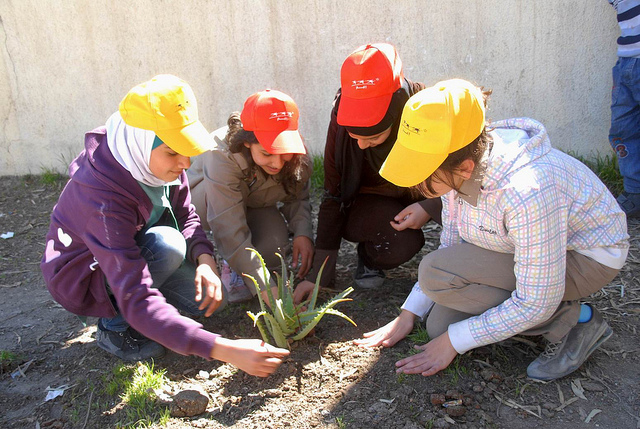
Use social media to encourage youth volunteerism in your organization
Guest post by Alison Richmond
easyfundraising.co.uk
Young people can be an incredible source of volunteers for nonprofits – they tend to have much more spare time than adults and often see volunteering as a good way to gain work and life experience to add to their resumé. But attracting young people can be difficult.
DoSomething.org released an index toward the end of last year in which they interviewed young people discussing their attitudes toward volunteering. With their suggestions in mind, here are some steps toward attracting young people to your nonprofit.
Communicate by embracing social media
The current generation of young people are highly invested in social media – Facebook, Twitter, blogging and more. For them, almost everything happens online, in a public space. Emails, newsletters, newspapers and even TV news tend to be ignored, while social sharing has become the paramount media channel.
To engage teenagers via social media channels, nonprofits should set up a Facebook page and Twitter account and regularly post content that engages potential volunteers and asks them to spread the word to their friends.
Ask your existing volunteers to share on their Twitter or Facebook accounts the work that they’ve been doing and what they’ve gotten out of it. For example: “Just spent the morning dog-walking at my local animal shelter – keeps me fit, plus loads of cute puppies!”
Interact and engage with your supporters
Be aware: These channels work best as a two-way street, with comments and questions being replied to swiftly. This generation is used to quick responses so leaving someone’s question hanging for two days is likely to turn off potential volunteers. Make sure that you’re checking in at least once a day, monitoring your social accounts, and replying to any comments.
Use your existing audience to engage their friends. Name-checking people who have volunteered at an event via your social media channels can be extremely effective in spreading the word, as the young people in question tend to share or retweet the post.
Facebook and Twitter are great but don’t give you the space to write more lengthy articles, so set up a blog for your organisation and post regular content, then use Twitter and Facebook to link to the posts.
Events, photos, videos and more
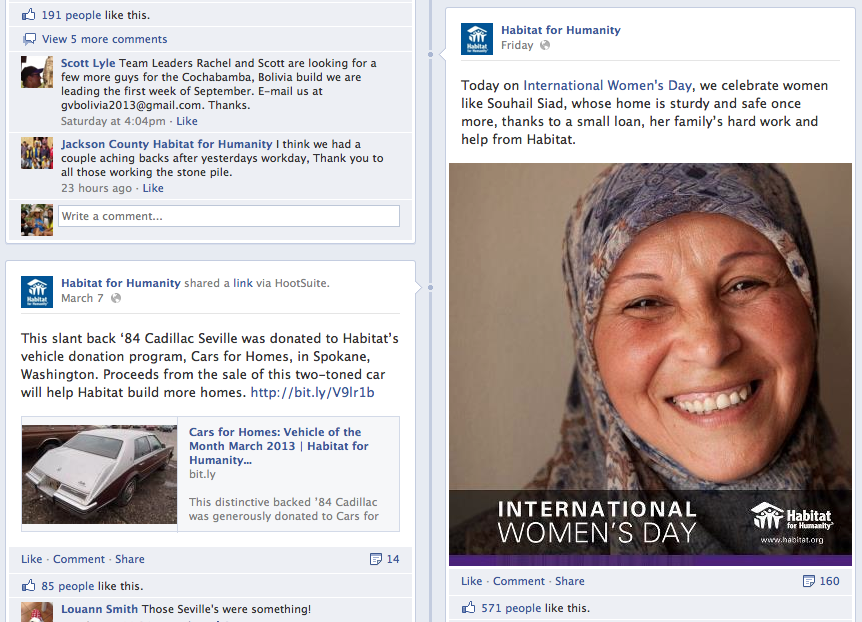
Photographs get shared on Facebook a lot, especially those that are cute, funny or shocking. Find a photo that represents your organisation and post it, remembering to ask users to share. If your nonprofit has regular events, make sure you take photos at the event, and post them on Facebook, tagging those volunteers who have Facebook accounts.
Having a recruitment drive or a big one-off or semi-regular event? Use Facebook’s Events feature to invite your existing volunteers, and then ask them to personally invite their friends. Include a lot of information about what the event will entail. In DoSomething.org’s study, many teens said that they were put off volunteering because they didn’t know exactly what would be expected of them.
Offer incentives to your regulars to bring a friend with them, such as a prize drawing entry – this doesn’t have to cost anything. You can ask local businesses to offer a prize and in return they will receive publicity and a partnership with a nonprofit organization that boosts their brand image.
Short videos are a great way to increase your audience and attract new volunteers. It doesn’t have to be shot by a famous director or scripted by a comedy genius, just show your volunteers working, explain what they get out of volunteering and the benefit that they are providing.
You can also create a YouTube video channel for your nonprofit, and upload videos regularly. Use your Twitter and Facebook accounts to link to the video. Ask people to share it – videos and images are more than three times more likely to be shared if you simply add, “Please share this video/image” at the bottom of the post.
Social media has really taken off over the past decade and it has brought us new ways in which to communicate. With the power the internet possesses, don’t neglect the various social media channels available when looking to encourage young people to get involved with your nonprofit.
How does your organization encourage young people to volunteer?
 This work is licensed under a Creative Commons Attribution-NonCommercial 3.0 Unported.
This work is licensed under a Creative Commons Attribution-NonCommercial 3.0 Unported.
The post Attracting young people to your nonprofit appeared first on Socialbrite.
]]>The post The secret behind creating viral content appeared first on Socialbrite.
]]>Uncovering the mystery of virality
Target audience: Nonprofits, cause organizations, foundations, NGOs, social enterprises, businesses, marketers, Web publishers, video producers.
 That’s right. A video of goats yelling like humans gets 12 million YouTube views in a month.
That’s right. A video of goats yelling like humans gets 12 million YouTube views in a month.
When nonprofits ask me how to create viral content, I talk about videos like the one above, which probably makes them wonder why they hired me.
The truth is, I have no idea what makes anything go viral. The common ingredients of viral content are well documented, but there seems to be something magically delicious and fantastic that’s hard to pinpoint. And that gets me excited!
The science behind viral content
Scientific research on what makes content go viral has found:
- Length matters. Longer articles tend to be shared far more often than short ones
- Emotions matter. You share content that makes you feel anxiety, awe and anger far more than you share content that makes you feel sad.
- Controversy matters. Blogs posts written about controversial topics get twice as many comments.
- Being useful matters. Content that is interesting or has immediate utility gets shared more.
- Humor matters. Humor is the single most common element of most viral ads. So shut up and be funny!
The viral content checklist
There’s also this amazingly useful “viral checklist” from Carson Ward:
- Did you sufficiently cover the topic? Is it long enough? (24)
- Does the content inspire a high-energy emotion like awe (16), anger (18), or anxiety (18)?
- Did your tone convey emotion? (12)
- Is it practically useful? (16)
- Is it interesting? (14)
- Is it surprising? (8)
- Does the author have fame/credibility? (8)
- If it’s supposed to be funny, is it actually funny? Are you sure your friends aren’t just being nice? (?)
(Next to each question there’s a maximum score to help prioritize the most important factors.)
The fact that the answers to these questions are largely subjective complicates matters that much more. You see, human beings are infinitely complex and dynamic.
So even the best attempt at creating viral content might still end up falling flat.
The secret behind viral content
The secret is that everyone is just as befuddled as you are. And yes, the experts are confused, too (even though many won’t admit it).
But confusion can be immensely beneficial.
Confusion is proof that you’re seeking, stretching, trying, testing and learning, which is way more interesting than a video of goats yelling like humans.
What do you think are some critical elements of virality?
 This work is licensed under a Creative Commons Attribution-NonCommercial 3.0 Unported.
This work is licensed under a Creative Commons Attribution-NonCommercial 3.0 Unported.
The post The secret behind creating viral content appeared first on Socialbrite.
]]>The post Crowdshout: Social advocacy made simple appeared first on Socialbrite.
]]>App puts social actions in the palm of your hand
Guest post by Glenn Vander Laan
Co-founder, Crowdshout
Target audience: Nonprofits, cause organizations, foundations, NGOs, social enterprises, educators, activists, general public.
 The idea for Crowdshout hit my business partners and me back in November 2011, a few months following the Arab Spring and during the Occupy Wall Street protests. We realized that despite all of the tools and technology out there to support advocacy, something was missing. The advent of social media and the smartphone was helping to change the world right in front of us, but it was clear to us that all of the puzzle pieces were yet to fall into place to fully enable and empower groups of people.
The idea for Crowdshout hit my business partners and me back in November 2011, a few months following the Arab Spring and during the Occupy Wall Street protests. We realized that despite all of the tools and technology out there to support advocacy, something was missing. The advent of social media and the smartphone was helping to change the world right in front of us, but it was clear to us that all of the puzzle pieces were yet to fall into place to fully enable and empower groups of people.
![]() Social media is providing real-time visibility to the social, political and consumer issues that affect us as individuals and as a society. The rapid dissemination of information has changed the game for governments and corporations in both positive and negative ways.
Social media is providing real-time visibility to the social, political and consumer issues that affect us as individuals and as a society. The rapid dissemination of information has changed the game for governments and corporations in both positive and negative ways.
While social media has been embraced as a large part of an overall communication strategy, it can also be used as a powerful weapon by people in reaction to unpopular plans and policies. Institutions must now consider how to react to public opinion — from a Change.org petition, Facebook campaign or a viral video on YouTube. In addition to this, the portability and capability provided by smartphones to access social media have allowed groups of individuals to communicate and organize very quickly and effectively in support of causes.
What was missing?
As we looked around at the advocacy landscape, it was clear that while a few high-profile causes have had a tremendous amount of visibility and success, the majority of worthy, important causes do not generate enough attention and action to reach their goals. Perhaps what’s even more important to consider is that the attention and support they do generate does not lead to any specific actions that could make a difference. This has been the main complaint that many have raised regarding what’s referred to as “slactivism” or “clicktivism” — that the actions are too insignificant or detached to have any lasting value.
While Change.org, Facebook, YouTube, Twitter and blogs are viable platforms to disseminate information and raise awareness, they do little to assist in shaping a strategy and directing behavior to effect change over time.
Thus, the need for a new generation of digital advocacy tools that contain built-in action and that can be used to help build and drive an ongoing campaign.
Social action at your fingertips
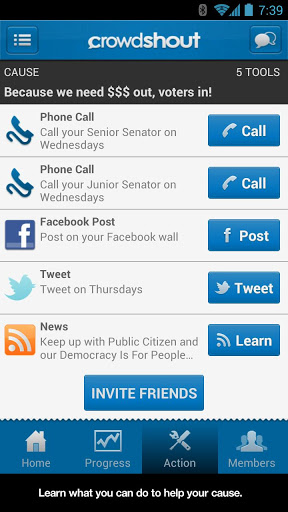
Crowdshout redefines social activism for the mobile age. We built Crowdshout as a mobile application to put social action in people’s hands so you can stay involved and connected to the causes you care about. By leveraging the power of the smartphone, we use location and calendar-based information to drive coordinated actions designed to make a difference.
On the Crowdshout platform each cause is configured with a set of action tools to help promote the cause. Action tools include sending email messages, tweeting on Twitter, posting to your Facebook wall, making phone calls, and reading the latest news items about the cause. We also have plans to incorporate more than a dozen unique action tools into the platform to drive targeted group behavior in support of causes.
Our goal was to make it very simple for cause participants to take a series of actions. We leverage a concept we call “micro actions,” a number of small tasks taken by individuals that get magnified through group participation. When you join a cause, the tools for that cause are configured into the notification system of your phone to remind you to perform the actions at a specified time. The tools are predefined email templates, filled out phone scripts completed, suggested Tweets and Facebook posts, and individuals are asked to take action at specific times over the course of the cause campaign. The timing aspect is important because one of the unique capabilities of the Crowdshout platform is coordinating actions by many people at the same time for maximum impact.
Think about creating a “tweet storm” on Twitter, or initiating a phone campaign blitz to light up the telephone switchboards of U.S. senators or representatives.
Crowdshout is offered in two ways. First, as an open platform we invite individuals to join and create causes and action plans, and invite your friends or other Crowdshout users to help you in taking actions to make a difference. If you are an organization or a group and would prefer a “branded” experience, Crowdshout is also offered as a service. The Crowdshout app can be rebranded to fit the look and feel of your organization while leveraging all of the Crowdshout tools and infrastructure to provide a specific branded experience for your supporters. You can check us out at crowdshout.com, download the Android app on Google Play or look us up during SXSW Interactive starting Friday.
What do you think? Would you use Crowdshout?
Related
• 10 top tools for cause & advocacy campaigns (Socialbrite)
• Resources for social advocates (Socialbrite)
• Social Advocacy Toolkit (Socialbrite)
• E-campaign resources (Socialbrite)
• Social fundraising tools for nonprofits & causes (Socialbrite)
• Advocate Interactive: Blending nonprofit advocacy with for-profit tactics (Socialbrite)
• Growing nonprofits and social movements with NationBuilder (Socialbrite)
• Empowered.org: Out to grow grassroots movements (Socialbrite)
• Causes reinvents itself as a campaign center (Socialbrite)
 This work is licensed under a Creative Commons Attribution-NonCommercial 3.0 Unported.
This work is licensed under a Creative Commons Attribution-NonCommercial 3.0 Unported.
The post Crowdshout: Social advocacy made simple appeared first on Socialbrite.
]]>The post Do Facebook videos or YouTube videos perform better on Facebook? appeared first on Socialbrite.
]]>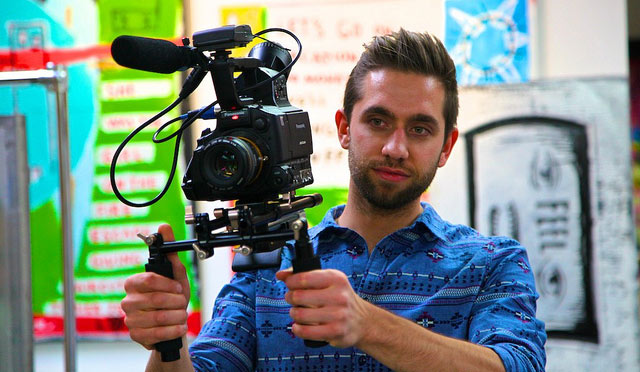
Photo by wmrice on Flickr (Creative Commons)
The pros and cons of Facebook vs. YouTube videos
Target audience: Nonprofits, cause organizations, foundations, NGOs, social enterprises, businesses, Web publishers, Facebook administrators, marketers.
 You have a thriving YouTube channel, and a thriving Facebook Page community.
You have a thriving YouTube channel, and a thriving Facebook Page community.
But should you upload videos to both places? Or, should you upload videos to YouTube and just share the link to the video on your Facebook page?
Facebook videos get higher engagement
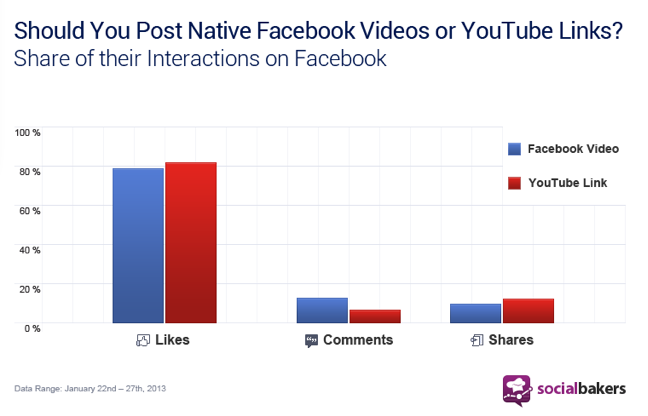 According to a recent study by Socialbakers, videos uploaded to Facebook achieved a 40 percent higher engagement rate over YouTube links posted to a page.
According to a recent study by Socialbakers, videos uploaded to Facebook achieved a 40 percent higher engagement rate over YouTube links posted to a page.
Their analysis of 3,684 YouTube links and 458 Facebook videos also found that both receive the same amount of likes and shares, but Facebook videos receive more comments.
How should you post your videos?
According to this informal poll about using Facebook or YouTube, most people prefer Facebook for a number of reasons. To help you decide whether to post YouTube links or upload your videos to Facebook, consider the following:
- Facebook videos cannot be shared outside of Facebook. YouTube videos can be shared anywhere.
- Both videos can be embedded in Web pages or blog posts.
- Facebook users tag their friends in Facebook videos but not YouTube videos.
- Facebook videos can be viewed in one tab on your page. In order to view your tubes within a single tab requires a third-party application.
How do you post video on your page? When do you see the best results?
Related
- 15 ways to enhance your Facebook influence
- Facebook tutorials on strategy, stats & more
- How nonprofits can take charge of Facebook’s news feeds
- 6 simple steps to create a Facebook page that just works
 This work is licensed under a Creative Commons Attribution-NonCommercial 3.0 Unported.
This work is licensed under a Creative Commons Attribution-NonCommercial 3.0 Unported.
The post Do Facebook videos or YouTube videos perform better on Facebook? appeared first on Socialbrite.
]]>The post Why can’t I raise any money with social media? appeared first on Socialbrite.
]]>
Help your donors climb the ladder of engagement
First of two parts. Next:
• Tips & tools for effective online fundraising
Target audience: Nonprofits, cause organizations, foundations, NGOs, social enterprises, cause advocates, fundraising professionals.
 Why does it seem that raising money with social media is almost impossible?
Why does it seem that raising money with social media is almost impossible?
We all know that retweets can travel faster than an earthquake and Facebook is basically word of mouth on steroids.
But why do so many social media fundraisers fall flat?
The answer lies in understanding exactly how people use social media, and why these tools even exist in the first place.
Four ways you use social media
If you think about your own behavior, you’ll realize that you use social media in at least four different ways:
- Connect – Facebook is a friend network. The reason you visit your Facebook news feed is to see what’s happening with your friends. Updates from brands, including nonprofits, are mostly interruptions.
- Discover – Twitter is where you discover interesting pictures, videos, and blog posts. You’ll also make new friends who might eventually become Facebook friends. YouTube is where you discover awesome videos, either by searching or browsing categories and trending videos.
- Sharing – Twitter, Facebook and Pinterest, and in fact all social media, is about sharing. On Facebook, you’ll share with friends; on Twitter and Pinterest, you’ll share with the world; and on Linked In you’ll share with professional connections.
- Organizing – You use Facebook Groups and Google Hangouts to get things done. You share common goals – no matter how formal or informal – with the other members.
What these four uses have in common is that they’re all relational. You and your relationship with a person, or you and your relationship with content or a goal.
Facebook is not Amazon.com and Pinterest is not eBay
This isn’t to say that people don’t buy things as a result of using social media. If I find an awesome musical group on Google Plus, I’ll buy their music. When I saw a Facebook ad about the tsunami in Japan, I donated money by clicking on the ad.
That being said, I never use social media with the goal of buying something or donating to a nonprofit.
The ladder of engagement
If you look at the ladder of engagement that Beth Kanter and Katie Paine discuss in their book, Measuring the Networked Nonprofit, you’ll learn that you need to take someone’s hand on Facebook or Twitter and walk them down a specific path where they will eventually pull out their credit card.
In terms of garnering donations, this means inviting those who naturally have a passion for your cause to join your e-mail list, where they are much more likely to donate to your cause.
What do you guys think about using social media for your organization’s fundraising efforts? Leave us a comment and let us know what’s worked best for you!
Related
• 3 top tips for nonprofits’ online fundraising (Socialbrite)
• 4 Facebook apps to raise funds for your cause (Socialbrite)
• Fundraising tips and tools (Socialbrite)
 This work is licensed under a Creative Commons Attribution-NonCommercial 3.0 Unported.
This work is licensed under a Creative Commons Attribution-NonCommercial 3.0 Unported.
The post Why can’t I raise any money with social media? appeared first on Socialbrite.
]]>The post 7 top video editing tools for nonprofits appeared first on Socialbrite.
]]>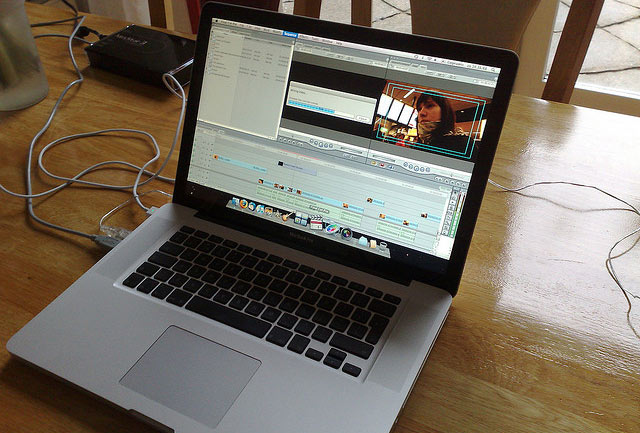
How to edit video in house with tools that fit your expertise
This is the second of a three-part series on nonprofits’ use of video. Also see:
• Part 1: What to consider when investing in video
• Part 3: Video for your cause: Getting giddy over Viddy
Guest post by Kyle Henri Andrei
Idealware
Before the digital revolution, videos — like still photographs — were actually shot on film. Editing them involved cutting out individual frames and splicing the filmstrip back together, a tedious and expensive process that resulted in lots of little plastic squares on the cutting room floor. You also had to move through all previous footage to reach the scenes you wanted to edit, more or less requiring you to edit the film in the order in which you shot it.
Today, software makes editing digital footage faster, easier and much more affordable, and puts it within reach of anyone with a personal computer. Even better, digital video editing is “nonlinear,” which means you can access the scenes you want to edit directly. This helps speed up the process, especially for a short, Internet-ready video for which you just need to trim off the ends and add a title screen or two.
Video editing: Tailor your video to your audience
You’ll never shoot a perfect video from start to finish in one take. A phone might ring, the wind could pick up, the sun could cause glare, or a dog might start barking. Editing lets you cull the best parts from several takes and combine them into one — or, more simply, cut the bad parts out of a single take.
How much do you need to edit your footage? It depends on what type of video you’re making, or who your audience will be. A video to show your donors at a fundraising gala may require a professional touch, but a guerrilla- or documentary-style video — a quick and simple one designed for the Internet that forgos high production values in favor of a spontaneous look and feel — doesn’t need to be polished and perfect. You might just add some titles or credits and trim out unnecessary bits, like when your talent forgot a line or stuttered while speaking.
It is possible to over-edit your video. All of the software options we discuss come with special effects that can enhance your video. Don’t overuse them — a little goes a long way. Some effects look cheap and gimmicky and will distract the audience from your message, while others — like dissolves, which let you transition between clips, and fades to black — can be used safely with some regularity.
Different tools offer different approaches to editing and degrees of usability. Let’s look at them one at a time.
The free tools: Free video hosting and remixing
There are several free or very low-cost solutions that let you make short videos or slideshows with minimal edits.
Animoto: Quick, easy & slick slide show
1Free for nonprofits, Animoto is not technically video-editing software but a website that allows you to create professional-looking slide shows quickly and easily by uploading and arranging your photos. The site also includes a library of licensed, rights-cleared music you can add to your slideshow, as well as a variety of themes and backgrounds. Although Animoto won’t solve all your video needs, a polished slideshow can be a great way to thank donors, volunteers and other supporters online or at a gala or other event.
YouTube: Basic editing features do the job
2YouTube, the popular streaming video site, now provides a handful of editing features. You can add up to seven of your previously uploaded videos into a basic timeline, trim them and add transitions, titles and other effects to create a new video. These features probably won’t be the best choice for those planning on creating a lot of videos but are a compelling option for organizations that need to edit videos infrequently.
In addition, mobile devices that shoot video, like smartphones and tablets, have started to offer basic editing functionality, and mobile apps can add more features. However, the built-in microphones are designed for phone calls, not videos, and the audio quality suffers as a result. Some small cameras also allow you edit videos on-screen and offer higher audio and video quality than smartphones. They might be attractive low-cost options for beginners looking to make a few short videos.
Beginner tools: Free & pre-installed? Go for it!
These are generally free or low-cost options that may already be installed on your computer. They’re good ways to get your feet wet with video editing.
Windows Movie Maker: A good introduction to editing features
3Windows Movie Maker (pre-installed on all Windows PCs, or a free download from Microsoft) is a good tool for people just getting started with editing, and the prevalence of Windows computers means you may already have it in your home. Movie Maker handles basic tasks well, like trimming clips and adding titles, transitions and soundtracks but offers limited file options for exporting edited videos or converting clips and files from one format to another.
iMovie: Get in the serious lane
4Apple computers have a long history of being used for creative purposes, including editing video. iMovie (pre-installed on Apple computers, or $50 as part of iLife), pre-installed on all recent Macs, is a surprisingly powerful and easy-to-use editing program designed for beginners. While Apple computers have grown in popularity, they are still uncommon in nonprofit offices. If your organization has one, this is a logical choice for editing your videos.
Adobe Premiere Elements: A step up from Movie Maker
5With an interface similar to iMovie’s, Adobe Premiere Elements ($99 retail, $15 on TechSoup) is an affordable and beginner-friendly editing tool. It’s a step up from Windows Movie Maker that offers more advanced functions and allows for importing and exporting many more different video file types. While iMovie users should have little trouble adjusting, Premiere Elements requires a longer learning curve than Movie Maker.
More advanced tools
While more expensive and technically demanding than the beginner tools, these options also provide more powerful features and greater flexibility for experienced and power users.
Adobe Premiere Pro: A good choice for professionals
6A significant step up in price and features, Adobe Premiere Pro ($799, $60 on TechSoup as a component of Adobe CS5) has little in common with Premiere Elements and uses a substantially different interface. It works well with other Adobe products, including the Creative Suite and After Effects, which, if used correctly, can create high-quality special effects for your video. Several blockbuster Hollywood films have been edited using this software, which means it’s certainly feature-rich enough for most nonprofits.
Final Cut Pro X: Top of class
7Final Cut Pro X ($300 for Apple computers) has long been the leading alternative to more expensive editing software like Avid, and a logical progression from introductory software like iMovie. With the release of Final Cut Pro X, Apple has geared the professional-level software to a wider consumer base, simplifying the interface, which will be familiar to iMovie users, and making it more accessible to the average nonprofit user. (The previous consumer-level, discounted version, Final Cut Express, has been discontinued by Apple, but can still be found for under $200 on some websites and continues to be supported.)
Other high-end solutions
If you’re skilled or savvy enough and have high-end video production needs — and a budget to support them — there are numerous video solutions available on the market. Avid Technology makes the most well-known, including the core of its product suite, Media Composer, which costs several thousand dollars and requires a powerful computer to run it properly. Avid also has a range of lower-priced solutions, but if your need for video editing is sufficient enough to need such tools, you’re likely better off contracting a professional video editor.
This article originally appeared on Idealware and is republished under a Creative Commons Attribution NonCommercial No Derivatives license.
The post 7 top video editing tools for nonprofits appeared first on Socialbrite.
]]>







